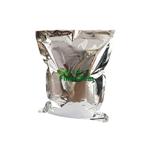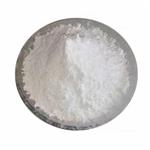- 4-Aminopyridine
-

- $5.00 / 25kg
-
2024-04-26
- CAS:504-24-5
- Min. Order: 1kg
- Purity: ≥99%
- Supply Ability: 50mt/year
- 4-Aminopyridine
-

- $1.10 / 1g
-
2024-04-17
- CAS:504-24-5
- Min. Order: 1g
- Purity: 99.0% min
- Supply Ability: 100 tons min
- 4-Aminopyridine
-

- $40.00 / 1kg
-
2023-09-06
- CAS:504-24-5
- Min. Order: 1kg
- Purity: 0.99
- Supply Ability: 10 tons
Related articles - Toxicity of 4-Aminopyridine
- Avitrol is the most popular avicide that is registered at the US Environmental Protection Agency for the control of certain pe....
- Nov 5,2021
|
| | 4-Aminopyridine Basic information |
| | 4-Aminopyridine Chemical Properties |
| Melting point | 155-158 °C (lit.) | | Boiling point | 273 °C (lit.) | | density | 1.26 | | vapor pressure | 0.046Pa at 25℃ | | refractive index | 1.5560 (estimate) | | Fp | 156°C | | storage temp. | 2-8°C | | solubility | H2O: soluble50mg/mL, clear, colorless | | form | Crystalline Powder, Solid or Crystals | | pka | 9.114(at 25℃) | | color | White to faint grey to light yellow | | Water Solubility | Soluble in water(112 g/L at 20 deg C). Soluble in ethyl ether, benzene. Slightly soluble in ligroin. Very soluble in ethanol. Soluble in methanol, acetone, tetrahydrofuran, isopropanol, acetonitrile, N,N-dimethylformamide, dimethylsulfoxide, and ethanol. | | Merck | 14,3933 | | BRN | 105782 | | Stability: | Hygroscopic | | InChIKey | NUKYPUAOHBNCPY-UHFFFAOYSA-N | | LogP | -0.76 at pH7.4 | | CAS DataBase Reference | 504-24-5(CAS DataBase Reference) | | NIST Chemistry Reference | 4-Pyridinamine(504-24-5) | | EPA Substance Registry System | 4-Aminopyridine (504-24-5) |
| | 4-Aminopyridine Usage And Synthesis |
| Description | 4-Aminopyridine (4-AP, fampridine, dalfampridine) is the first drug approved by the FDA to improve walking in patients with multiple sclerosis (MS). Dalfampridine is a voltage-gated potassium channel blocker that readily penetrates the CNS and increases the conduction and duration of action potential across nerve fibers resulting in enhanced functionality as observed in the walking speed of MS patients.
From a safety perspective, seizure was the most important adverse event from various dalfampridine clinical trials. Therefore, dalfampridine is contraindicated in patients with a history of seizures. Since dalfampridine is primarily excreted by the kidney as unchanged drug, it is also contraindicated in patients with moderate to severe renal impairment. Assessing the overall benefit–risk profile from various clinical trials, the FDA approved dalfampridine (daily oral dose of 10 mg, b.i.d.) to improve walking in MS patients with existing gait impairment. | | Chemical Properties | 4-aminopyridine is a white crystalline solid that contains about 98% active ingredient. It is soluble in water and slightly soluble in benzene and ether. 4-Aminopyridine formulations are classifi ed by the US Environmental Protection Agency (US EPA) as restricted
use pesticides (RUPs) and therefore should be purchased and used only by certifi ed and
trained workers and applicators. Avitrol is available as grain baits or as a powder concentrate. It is one of the most prominent avicides. It is registered with the EPA for use against
red-winged blackbirds, blackbirds in agricultural fi elds, grackles, pigeons, and sparrows
around public buildings, and various birds around livestock feeding pens. Avitrol repels
birds by poisoning a few members of a fl ock, causing them to become hyperactive. | | Originator | Rush University Medical Center (United States) | | Uses | Avitrol (4-aminopyridine), has repellent–toxicant properties for birds and is classed as a severe poison and irritant. This secondary bird repellent can be used as a broadcast bait, causing uncoordinated flight and distress calls and escape responses in nearby birds. | | Uses | Dalfampridine is used in characterizing subtypes of potassium channel, and has also been used to manage some of the symptoms of multiple sclerosis, and is indicated for symptomatic improvement of walking in adults with several variations of the disease. Dalfampridine is a precursor to the drug Pinacidil. | | Definition | ChEBI: 4-aminopyridine is an aromatic amine that is pyridine bearing a single amino substituent at position 4. An orphan drug in the US, it is used to improve walking in adults with multiple sclerosis. It has a role as an avicide, a potassium channel blocker and an orphan drug. It is an aromatic amine and an aminopyridine. | | Brand name | Neurelan (E′lan);Ampyra. | | Synthesis Reference(s) | Tetrahedron Letters, 39, p. 1313, 1998 DOI: 10.1016/S0040-4039(97)10877-2 | | General Description | White crystalline material with no odor. Used as an avicide, an intermediate and as a fixer for some textile dyes. | | Reactivity Profile | 4-Aminopyridine neutralizes acids in exothermic reactions to form salts plus water. May be incompatible with isocyanates, halogenated organics, peroxides, phenols (acidic), epoxides, anhydrides, and acid halides. Flammable gaseous hydrogen may be generated in combination with strong reducing agents, such as hydrides. | | Health Hazard | 4-Aminopyridine, a pyridine compound, is an extremely effective bird poison. In agriculture, 4-AP is used as an extremely effective bird poison sold under the brand name Avitrol. It is highly toxic to all mammals including humans if dosages are exceeded, and as an experimental drug, the recommended dose data is unavailable. | | Fire Hazard | Material may produce irritating or poisonous gases in fire. Runoff from fire control water may give off irritating or poisonous gases. | | Safety Profile | Poison by ingestion, subcutaneous, intravenous, and intraperitoneal routes. Human systemic effects by ingestion: hallucinations and vomiting. When heated to decomposition it emits toxic fumes of NOx,. | | Potential Exposure | Used as a chemical intermediate in pharmaceuticals; as an agricultural chemical for field crops; and as a bird repellent and poison | | in vitro | 4-ap acts by selectively blocking fast, voltage-gated k+ channels in excitable tissues. in axons, k+ channel blockade increases the safety factor1 across demyelinated internodes and 4-ap can, therefore, restore conduction in focally demyelinated axons. 4-ap also increases calcium (ca2+) influx at presynaptic terminals thereby enabling an enhancement of neuroneuronal or neuromuscular transmission in normally myelinated neurons [1]. | | in vivo | investigations of the effects of 4-ap on neurologic deficits in animal in vivo models of demyelinating disease or sci have yielded inconsistent results. some trials have shown indications of potential neurological benefit, such as enhanced motor evoked potentials or reflex activity, while others have yielded no evident gains in function [1]. | | IC 50 | 170 and 230 μm at kv1.1 and kv1.2, respectively | | storage | Room temperature | | Shipping | UN2671 Aminopyridines, Hazard Class: 6.1; Labels: 6.1-Poisonous materials | | Purification Methods | Crystallise the aminopyridine from *benzene/EtOH, then recrystallise it twice from water, then crush and dry it for 4hours at 105o [Bates & Hetzer J Res Nat Bur Stand 64A 427 1960]. It has also been crystallised from EtOH, *benzene, *benzene/pet ether, toluene and sublimes in a vacuum. [Beilstein 22/9 V 106.] | | Toxicity evaluation | 4-Aminopyridine is highly toxic to animals, with an approximate oral LD50 of 3.7 mg/kg body weight in the dog. 4-Aminopyridine blocks potassium channels, resulting in increased cholinergic nervous system activity. The ability of 4-aminopyridine to block potassium channels has led to some speculation that it may be an effective therapy for multiple sclerosis. Clinical signs in poisoned animals often develop within several hours of ingestion and commonly include tachycardia, salivation, tremors, ataxia, and seizures. Death from respiratory failure may develop within 4 hours of exposure. Chemical analysis of frozen stomach contents, liver, and urine is available at some diagnostic laboratories, and residues can be detected in poisoned birds. Although no specifi c antidotal therapy exists, anticonvulsants and activated charcoal administration are recommended. | | Incompatibilities | Sodium nitrite, strong oxidizers. Avoid contact with acid anhydrides, acid chlorides; and strong acids. | | Waste Disposal | Consult with environmental regulatory agencies for guidance on acceptable disposal practices. Generators of waste containing this contaminant (≥100 kg/mo) must conform with EPA regulations governing storage, transportation, treatment, and waste disposalIncineration with nitrogen oxides removal from effluent gas. | | references | [1] hayes kc. the use of 4-aminopyridine (fampridine) in demyelinating disorders. cns drug rev. 2004 winter;10(4):295-316. |
| | 4-Aminopyridine Preparation Products And Raw materials |
| Raw materials | Potassium carbonate-->Phthalic acid-->Pyridine-N-oxide-->4-Nitropyridine | | Preparation Products | 4-ACETAMIDO-3-AMINOPYRIDINE-->(3-BROMO-PYRIDIN-4-YL)-CARBAMIC ACID TERT-BUTYL ESTER-->2,2-DIMETHYL-N-PYRIDIN-4-YL-PROPIONAMIDE-->4-(Boc-amino)pyridine-->3-PYRIDINEACETIC ACID, 4-[[(1,1-DIMETHYLETHOXY)CARBONYL]AMINO]-A-OXO-, ETHYL ESTER-->TERT-BUTYL 3-FORMYLPYRIDIN-4-YLCARBAMATE-->efficient polymer catalyst for acrylation-synthesis and characterigation of polyamide containing supernucleophilic reagent-->4-Iodopyridine-->2-chloro-5-ethylaminomethylpyridine-->4-Amino-3-nitropyridine-->4-Amino-2-bromopyridine-->4-PYRIDYLTHIOUREA-->3,4-DiaMino-5-broMo-2-chloropyridine-->4-chloropyridine-->2,7-di(pyridin-4-yl)benzo[lMn][3,8]phenanthroline-1,3,6,8(2H,7H)-tetraone-->4-Amino-3-(trifluoromethyl)pyridine |
|